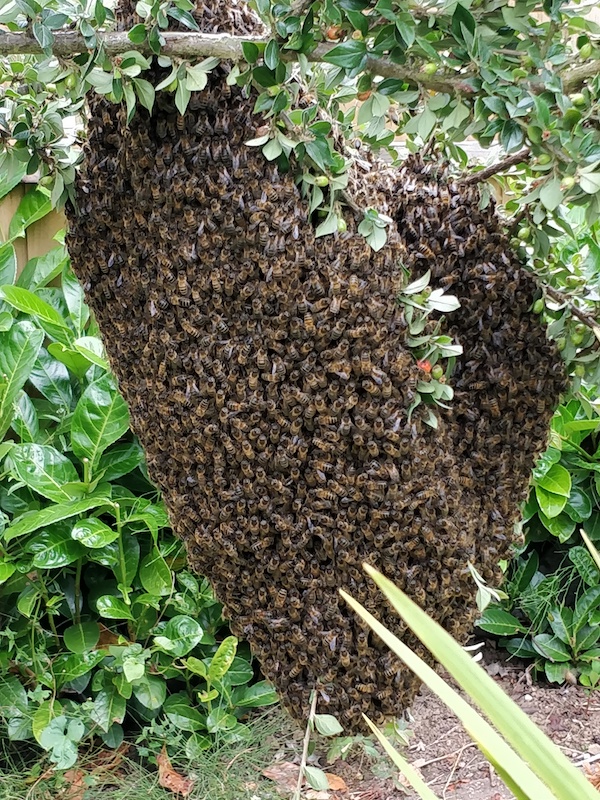Why do bees swarm?
If you see a big, swirling cloud heading out across the rooftops and trees, it could be a swarm of honeybees. They have left the safety of their hive and are flying off to find a new home – a hole in a tree, a chimney or an empty hive. It’s an awesome sight!
Swarming bees are full of honey – carrying supplies for their new home – so they usually don’t sting. But it’s best to stand well back just in case!
Swarming is an important, natural process. It happens when a colony of honeybees splits and the queen takes a large number of worker bees with her in search of a new home. It’s the way they reproduce. As soon as the old queen reaches the new nest site her entourage builds wax honeycomb so then she can lay her eggs and there’s space for pollen and honey stores.
Meanwhile in the original hive site new queens are hatching. Another one or two queens might leave the colony to set up a new home but one will stay to rule over the original hive. In this way the colony becomes two, three or more colonies.
Honey bees mostly swarm early in the season from late April to June. So this is a busy time for beekeepers!
Swarming early in the season gives the bees enough time to set up their new home and gather plenty of stores to see them through the winter. Beekeepers put out bait hives to try to lure a passing swarm. We also ‘artificially’ swarm our colonies which means separating the brood from the queen and flying bees. This splits the colonies and the urge to swarm goes away – usually!
So if you are lucky enough to see a swarm of bees, marvel at this force of nature and then find your local swarm collector here: https://www.bbka.org.uk/swarm#swarmmap

